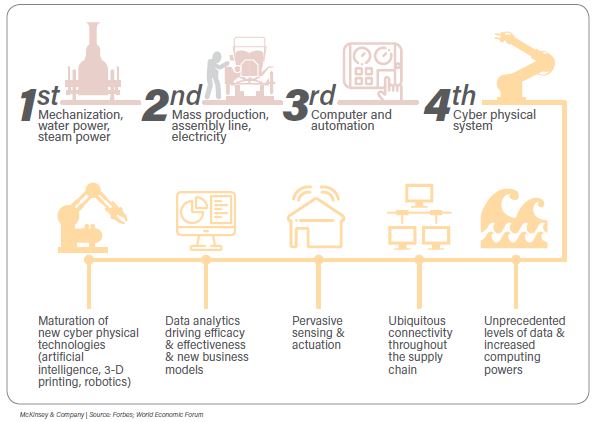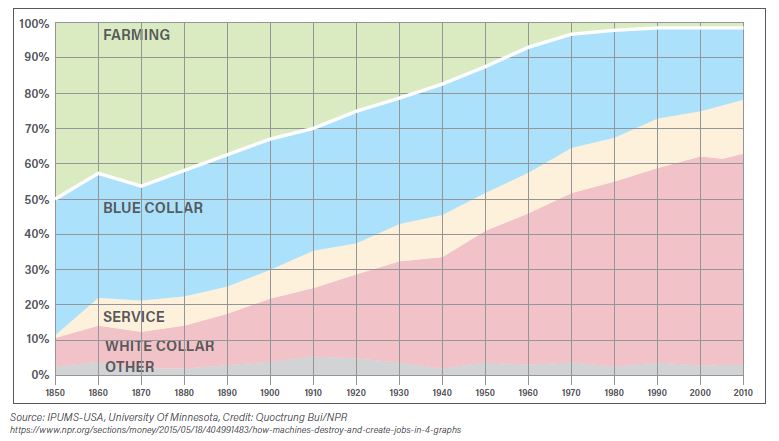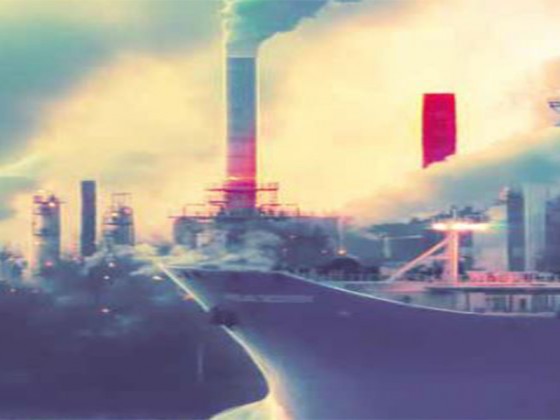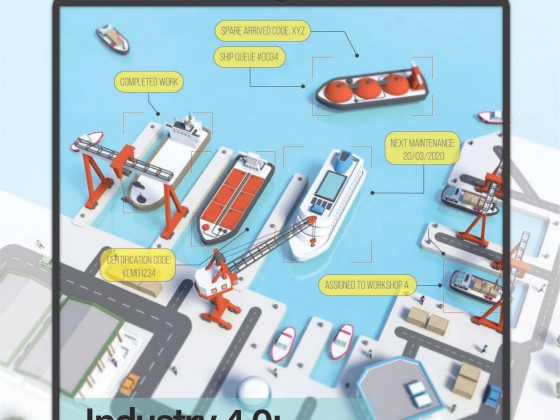
by | Dr. Ahmad Faisal Mohamad Ayob
Author’s Profile
Dr. Ahmad Faisal Mohamad Ayob is a Senior Lecturer at the School of Ocean Engineering, Universiti Malaysia Terengganu (UMT). He received his B. Eng. (Honours) in Mechanical Engineering from Universiti Malaya in 2006 and his PhD in Mechanical Engineering in 2011 from the University of New South Wales @ Australian Defence Force Academy. His research interests include shape design, water robotics and multidisciplinary design optimization. His membership includes C.Eng. of The Institute of Marine Engineering, Science and Technology (IMarEST), Board of Engineers (BEM), The Royal Instititution of Naval Architects (RINA) and Institute of Electrical and Electronics Engineers-Oceanic Engineering Society (IEEE-OES). Industrial collaboration includes activities with PETROSAINS and PETRONAS.

The Tale of Farmers and Blacksmiths
The first industrial revolution occurred at the end of 18th century when mechanical automation began to take shape in the form of steam engine. During this period, skilled workers such as farmers enjoyed the benefits of the revolution via the use of steam engines that replaced their working dependencies on cattles and horses. Owing to the rise of mechanisation, the role of manufacturers such as blacksmiths became very important to cater for the rising demand in machineries and tools.
Between the first and second Industrial Revolution, the world saw a sharp increase in mechanisation in which creation of machines such as mowers, tractors and harvesters allowed for a single farmer to harvest more agricultural produce. The same concept applies to the blacksmiths—a single blacksmith is able to produce more machines and tools via the use of conveyor belts and bigger manufacturing machines. In short, both industrial revolutions have both positive impact and negative impact; the industrial mechanizations allows for a greater output in a shorter period of time but at the same time diminishes the number of job opportunities for workers.
As the world moves onwards to the 3rd Industrial Revolution, an interesting observation begins to take shape. In 1850’s during the first Industrial Revolution 51 percent of workers in the US were in farming jobs, while only 1 percent of workers are focused on the service jobs. As the years progressed, an inverse trend indicates that at present only 1 percent of workers are in the agricultural industry whereas the percentage of service jobs has increased to 16 percent.
From another perspective the loss of jobs in the agricultural industry are balanced out by the increase of job in the services sector. As the shift towards the use of automation and robotics plays out in the 3rd Industrial Revolution, the workforce have moved towards the nonphysical aspects of the industry which caters for data management and decision making. Towards the end of this period, the blue-collar jobs (machine operators, manual labor, assembly and construction) has shown a declining trend due to the emphasis towards white-collar job (professionals and technical, managerial, sales and clerical jobs).

Now with the confluence of computing power, greater interconnectivity between mobile computing and machines and massive data generation, the dawn of the next industrial revolution, termed the 4th Industrial Revolution brings together the automated discovery of knowledge and decision making.
The 4th Industrial Revolution
Driven by four major themes— massive amount of data, increasing computational power, automated discoveries of new knowledge via AI and faster digital to physical object creation/action—the 4th Industrial Revolution is starting to take shape. The impact is now slowly experienced by the current workforce in many industries, akin to the case of the farmers and blacksmith in the previous industrial revolutions. Though the white-collar career path in management offers the chance to progress further, more optimal decision making can be made via the use of AI, in which fundamentally the machines learns and mimic human autonomy in a more efficient fashion.
Taking an example from supply chain management (SCM), Tungsten Network [1] has estimated that valuable time and money is wasted in trivial supply chain related-task that are conducted operationally by humans. The report accounts that a loss equated to 6500 hours per work year, which covers for manual paperbased process, manual, invoice process (chase, discrepancies and errors) and manual response to supplier inquiries.
It does sound like a nightmare for the white-collars workforce when AI is fully operational, eliminating all the inefficiencies due to time taken to finish routine works. However, the use of AI does not necessary eliminates the number of people in the workforce, but rather opens up the opportunity to do more with the current capacity of people in the organisation. In this perspective, there are two main strategies than can be adapted [2];
a. Using AI to assist executives in terms of virtual assistant, data analysis and software solution to remove human bias,
b. Complete automation of task that does not require any human intervention, but rather targeted monitoring by human.
Similarly with the case of the farmer in the 1st Industrial Revolution, it can be hypothesised that via the use of AI, one white-collar executive may be able to run multi-disciplinary tasks that traditionally will require multiple person for execution, hence in return enhancing productivity and profits of the company. As an example in the case of ship design, a naval architect are able to generate multiple candidate designs upon receiving the client requirements via the use of AI and automation. The extended case would be a single naval architect handling multiple projects (containership, high speed craft, yachts) through the assistance of AI.
Winning and Losing in the Cyber-Physical Era
Although the discussion above offers two strategies on how to reposition humans in the 4th Industrial revolution workforce, an Oxford study conducted by Frey and Osborne in 2013 [3] predicted that 47 percent of jobs could be automated by 2033. In January 2017, McKinsey has reported that AI-driven tasks contributed to 5 percent of job losses in the market. The most affected industries are Operations (Manufacturing, SCM and R&D), Information Technology and Customer Service.
Apart from that, in 2016 Google has announced that their self-driving car has clocked 3 million miles driving on public road, while their competitor Waymo recorded 2.5 billion miles of self-driving data in 2017. In a nutshell, based on the reported evidence, there exists some potential threat to human workforce where AI and automation will replace jobs involving routine work.
However to date, the adoption of cyber-physical activities involving automation of tasks to replace humans are still in its infancy. While inter-connected devices via internet are ubiquitous, data security and understanding the underlying AI black box is still a major concern that hinders the adoption of the four themes offered by the 4th Industrial Revolution. There are still serious concerns on this as recently in March 2018, Reuters reported a self-driving Uber car hit and killed a woman crossing the street in Arizona, marking the first fatality involving an autonomous vehicle possibly dealing a potential blow to the AI technology that is expected to transform transportation [6]. Studies between the last 3 years indicate that most of the adoption of AI and automation are targeted on improving the efficiency and profits of the company while retain the current workforce. To this end there are several key strategies that can be adopted:
a. Incorporate AI on activities that have immediate impact on revenue and cost. This is particularly useful for mapping the catalog to potential customer based on the habitual browsing record e.g. online shopping (Amazon, Lazada) or music services (Apple Music, Spotify).
b. Producing more outputs from the same number of staff using AI. At the current stage of infancy, one of the implementation of AI are in the form of IT support. Through the availability of Natural Language Processing, a single support staff may deploy tens or hundreds of chatbots to cater for live questions and answer activities between the staff and customers.
c. Focusing on the computer-tocomputer interactions in IT, finance and accounting. Although the integration between different systems is not a trivial task, process such as contingency analysis, resource allocation and project management can be scheduled dynamically via the use of AI, in which all every possible facet (weather, sentiment analysis, geopolitical situations) can be considered to assist in decision making.
Just like the previous Industrial Revolutions, the 4th Industrial Revolution would take some time to stabilise. This is contributed by several factors, namely; ambiguous economic incentives, the need to invest in new grounds, skill gaps to cater for the bleeding edge of current technology, lack of confidence from investors, and lack of standardisation [7]. These are the elements that revolve around mature stage businesses which cling to the tried and tested paradigms, if it’s not broken, don’t fix it.
However, observing the fast-paced behemoth of the Internet era such as Google and Facebook, the rise to expansion began with the slogan, move fast and break things. Regardless, the tale of Farmers and Blacksmiths shall hold true in the current Industrial Revolution and beyond.









